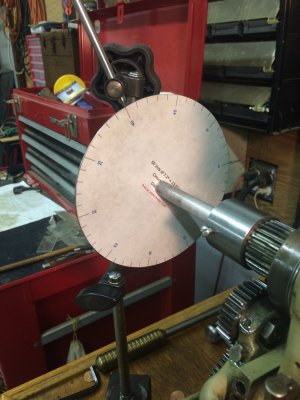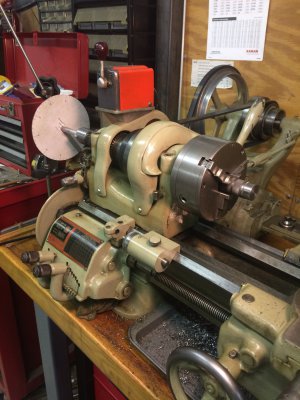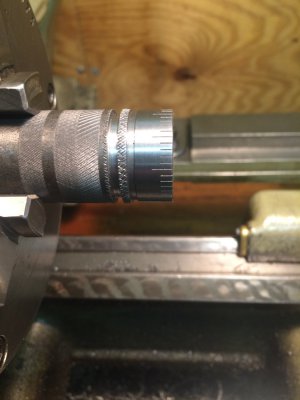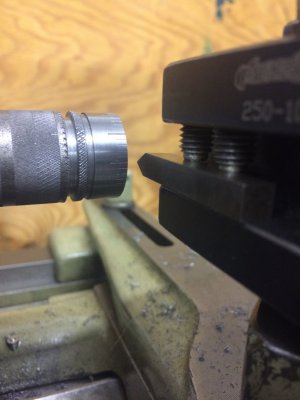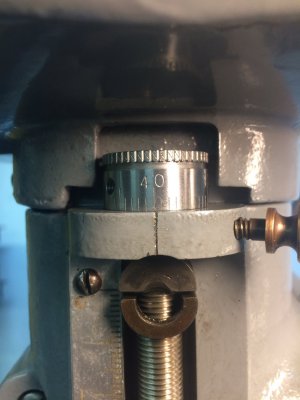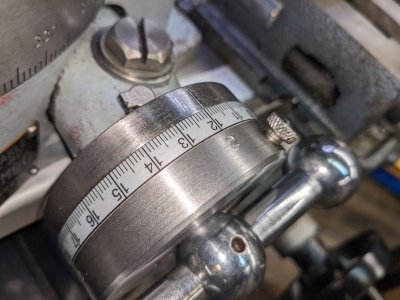- Joined
- Dec 3, 2020
- Messages
- 146
Hi all, after looking for a long time for a US-made rotary table I could afford, I pulled the trigger on this Troyke R-9 on ebay. He was asking $315 with no "make offer" button but I offered $250 anyway and he accepted. Under $400 with shipping and tax. Not a steal for sure but I'm happy, it cleaned up nice (Thank you Evaporust!). Super smooth and no apprentice marks.
Seller's pic on ebay:
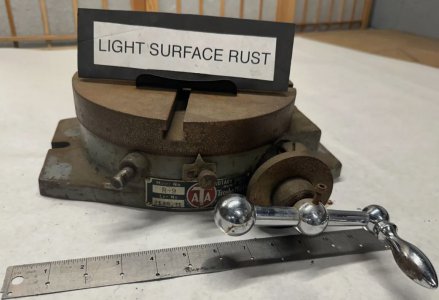
The guts inside were amazingly perfect, and it adjusted up beautifully, zero play with no tight spots. I was able to adjust the backlash to maybe one minute of arc, could have gone tighter but I hear that increases wear. It's tight, but still turns easily enough with the handwheel. It's my first rotab, so maybe I'm easily impressed, but I am blown away by the quality.
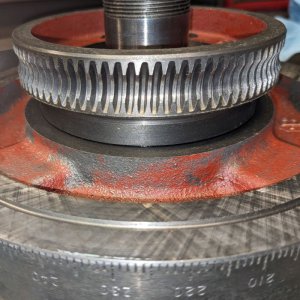
I knew it was missing the part with the minutes graduations (and has the wrong handle mounted) but I bought it anyway, so I can't go crying to ebay about it. For most of what I want to do I won't need it. But I want to make one anyway, or maybe one of you can pop one out easily? 3d printed? If I dare to dream, an OEM replacement out there in someone's shop?
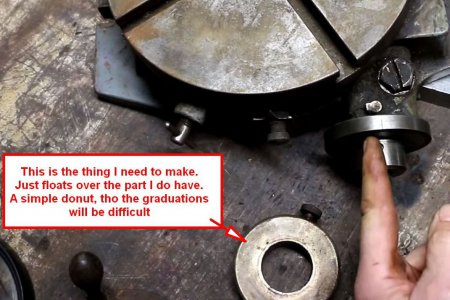
The pic is not mine, it's a still from a Youtube video. Dorky mark-up by me. His table is identical to mine though.
I can make one out of steel in a half-hour, except for the graduations, no idea how to do that. I thought about turning a shallow groove around the circumference and inlay a printed strip, might do that. Open for suggestions.
The "donut" has 240 graduations, zero to 60 minutes repeating 4 times for 4°, which is how far the table moves with one full turn of the handle.
Here's mine cleaned up and mounted to my benchtop mill-drill:
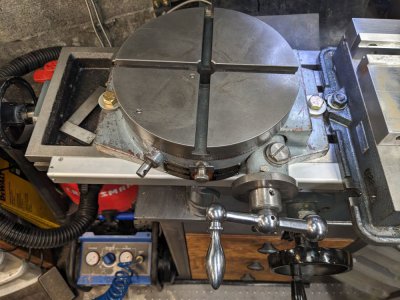
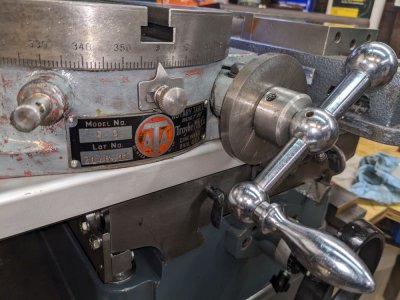
Last question, anyone know when it was made? Is the Lot No. 2146.11 any clue? There's also a 46 stamped in the ring on the bottom that threads onto the table's stem, pulling it down. I'm a retro kinda guy so I love the old-fashioned font and logo, would not trade this for a new one.
Thanks all
Mark in Seattle
Seller's pic on ebay:

The guts inside were amazingly perfect, and it adjusted up beautifully, zero play with no tight spots. I was able to adjust the backlash to maybe one minute of arc, could have gone tighter but I hear that increases wear. It's tight, but still turns easily enough with the handwheel. It's my first rotab, so maybe I'm easily impressed, but I am blown away by the quality.

I knew it was missing the part with the minutes graduations (and has the wrong handle mounted) but I bought it anyway, so I can't go crying to ebay about it. For most of what I want to do I won't need it. But I want to make one anyway, or maybe one of you can pop one out easily? 3d printed? If I dare to dream, an OEM replacement out there in someone's shop?

The pic is not mine, it's a still from a Youtube video. Dorky mark-up by me. His table is identical to mine though.
I can make one out of steel in a half-hour, except for the graduations, no idea how to do that. I thought about turning a shallow groove around the circumference and inlay a printed strip, might do that. Open for suggestions.
The "donut" has 240 graduations, zero to 60 minutes repeating 4 times for 4°, which is how far the table moves with one full turn of the handle.
Here's mine cleaned up and mounted to my benchtop mill-drill:


Last question, anyone know when it was made? Is the Lot No. 2146.11 any clue? There's also a 46 stamped in the ring on the bottom that threads onto the table's stem, pulling it down. I'm a retro kinda guy so I love the old-fashioned font and logo, would not trade this for a new one.
Thanks all
Mark in Seattle


